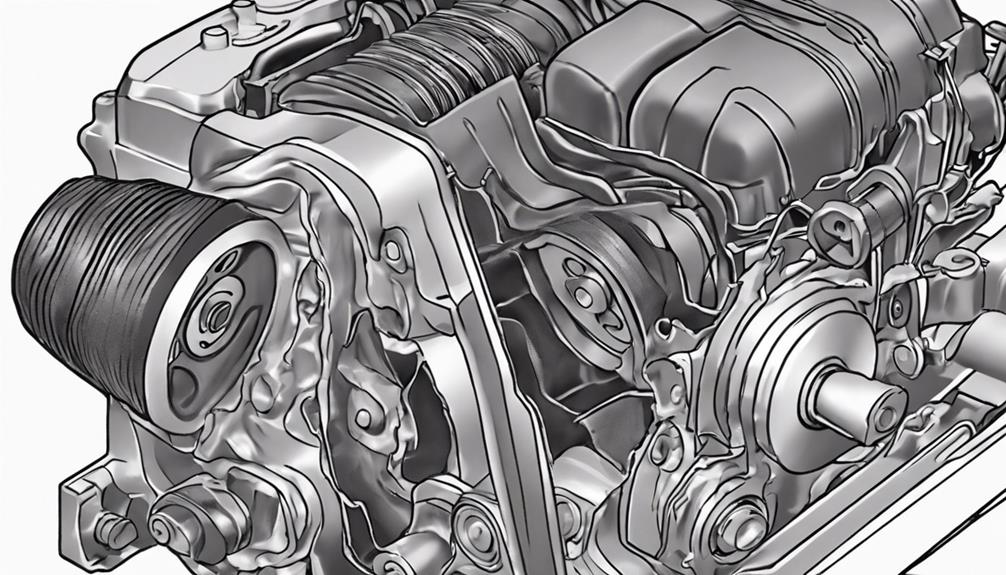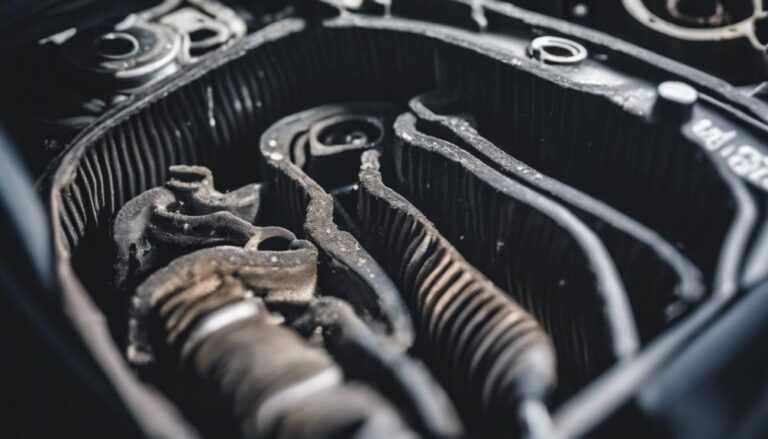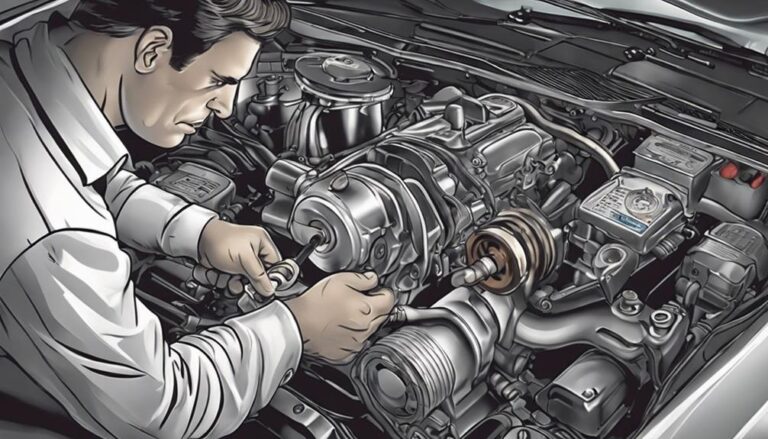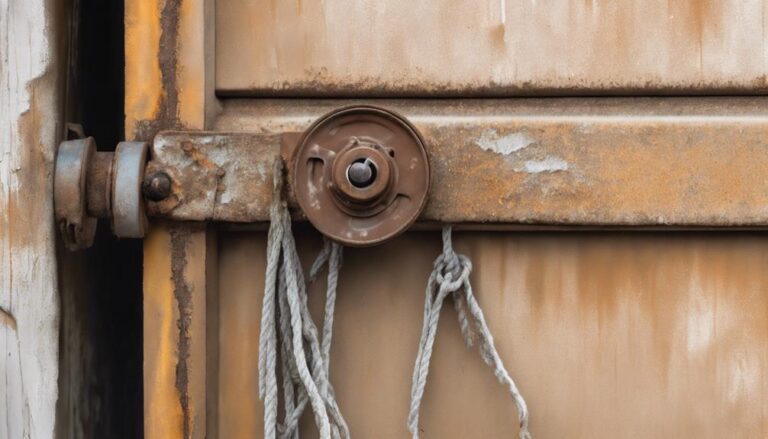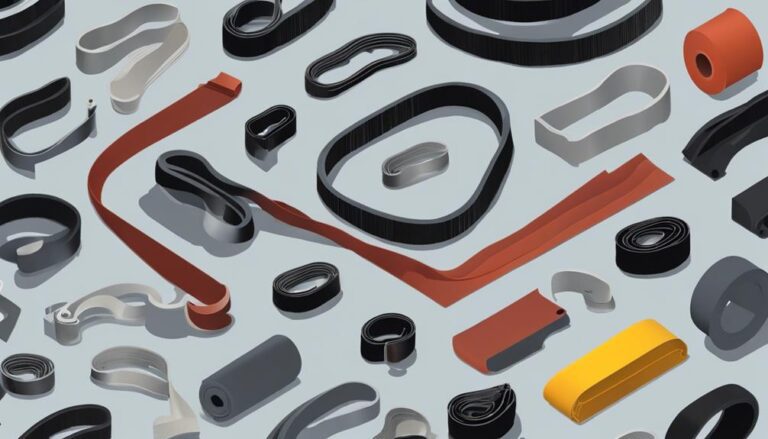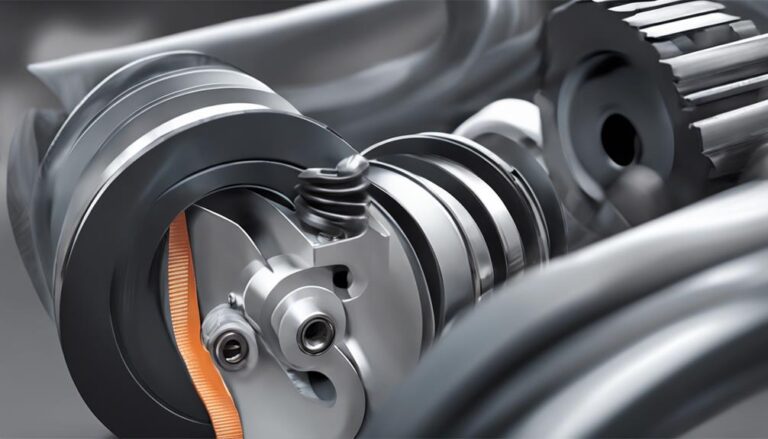Why Do Pulleys Fail in Serpentine Belt Systems?
Imagine driving on a hot summer day when suddenly, your serpentine belt system fails due to a broken pulley. You're left stranded, wondering why this important component gave out.
Pulleys can fail in these systems for various reasons, each with its own set of consequences. From excessive wear and tear to overheating issues, understanding the root causes of these failures is essential.
Stay tuned to uncover the common culprits behind pulley failures and how you can prevent them from disrupting your journey.
Key Takeaways
- Improper tension levels and irregular maintenance schedules lead to pulley failure.
- Inadequate lubrication causes increased friction, impacting pulley performance and longevity.
- Misalignment issues arise from improper tension or incorrect pulley design, accelerating pulley wear.
- Overheating, caused by high loads or lack of cooling, distorts pulley shape and threatens system efficiency.
Excessive Wear and Tear
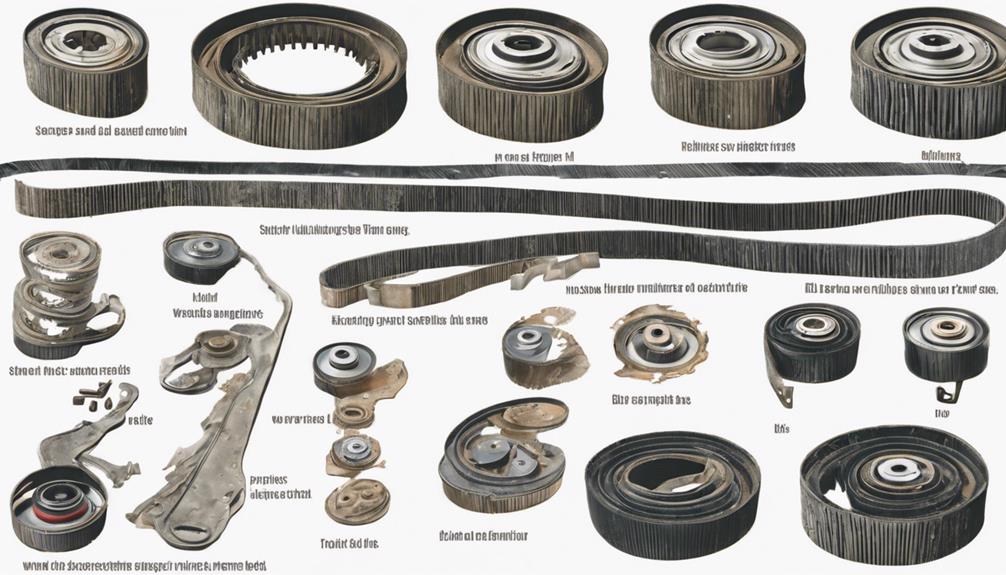
Frequently, excessive wear and tear in serpentine belt systems can be attributed to irregular maintenance schedules or improper tension levels. Frictional forces play a significant role in this wear and tear phenomenon. When the belt tension is too high or too low, it can lead to increased friction between the belt and pulleys, causing accelerated wear on both components. This increased friction generates heat, which can result in material fatigue over time.
Material fatigue is another critical factor contributing to excessive wear and tear in serpentine belt systems. Continuous exposure to tension variations and frictional forces can cause the materials in the belt and pulleys to weaken over time. As these materials weaken, they become more prone to cracking, splitting, or breaking under normal operating conditions. It's essential to monitor tension levels regularly and adhere to recommended maintenance schedules to prevent material fatigue and prolong the lifespan of your serpentine belt system.
Lack of Lubrication
Continuous lack of proper lubrication in serpentine belt systems can greatly impact the performance and longevity of the components involved. Preventative maintenance is vital to make sure that all pulleys within the system are adequately lubricated. Lack of lubrication can lead to increased friction between the pulley bearings and the belt, causing accelerated wear and potential failure.
To address this issue, troubleshooting techniques should include regular inspection of the pulleys for signs of dryness or inadequate lubrication. Applying the appropriate lubricant according to manufacturer specifications can help mitigate the risk of pulley failures due to lack of lubrication. Additionally, incorporating a lubrication schedule into your maintenance routine can help prevent future issues related to inadequate lubrication.
Misalignment Issues
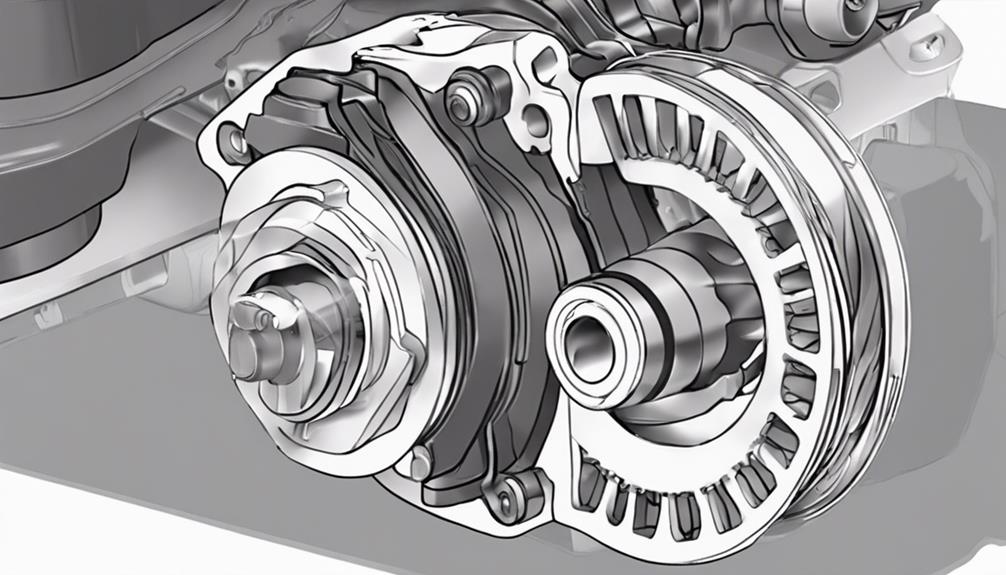
Misalignment issues in serpentine belt systems can result in premature wear and potential system failures if not promptly addressed. When components are not in proper alignment, excess stress is placed on the belts, pulleys, and other related parts, leading to accelerated wear and reduced efficiency of the system. Two key factors contributing to misalignment problems are insufficient belt tension and inappropriate pulley design.
To prevent misalignment issues, ensuring adequate belt tension is essential. Proper tension keeps the belt securely in place, reducing the likelihood of it slipping off the pulleys or shifting out of alignment. Additionally, selecting the correct pulley design is vital. Pulleys should be carefully chosen to match the belt specifications and align properly with other pulleys in the system. Incorrect pulley design can introduce unnecessary strain on the belts, causing misalignment and potential failures.
Addressing misalignment problems promptly through regular maintenance checks and adjustments can prolong the life of the serpentine belt system and prevent costly breakdowns. By maintaining proper belt tension and selecting suitable pulley designs, you can mitigate misalignment issues and ensure the smooth operation of your vehicle's belt system.
| Factors Leading to Misalignment Issues | |
|---|---|
| 1. Insufficient belt tension | 2. Improper pulley design |
Overheating
Overheating poses a critical threat to the efficiency and longevity of serpentine belt systems in vehicles. When a pulley overheats, it can lead to premature failure due to the effects of thermal expansion. The excessive heat causes the materials in the pulley to expand beyond their design limits, resulting in structural weaknesses and decreased performance. This thermal expansion can distort the shape of the pulley, affecting its ability to maintain proper alignment with the belt and other components in the system.
Overheating often occurs when the serpentine belt system is under high loads or operating in harsh conditions. Factors such as a malfunctioning cooling system, inadequate lubrication, or prolonged exposure to extreme temperatures can contribute to the overheating of pulleys. To prevent overheating-related issues, it's essential to maintain the cooling system properly, use high-quality lubricants, and protect the serpentine belt system from excessive heat sources.
Defective Pulley Bearings
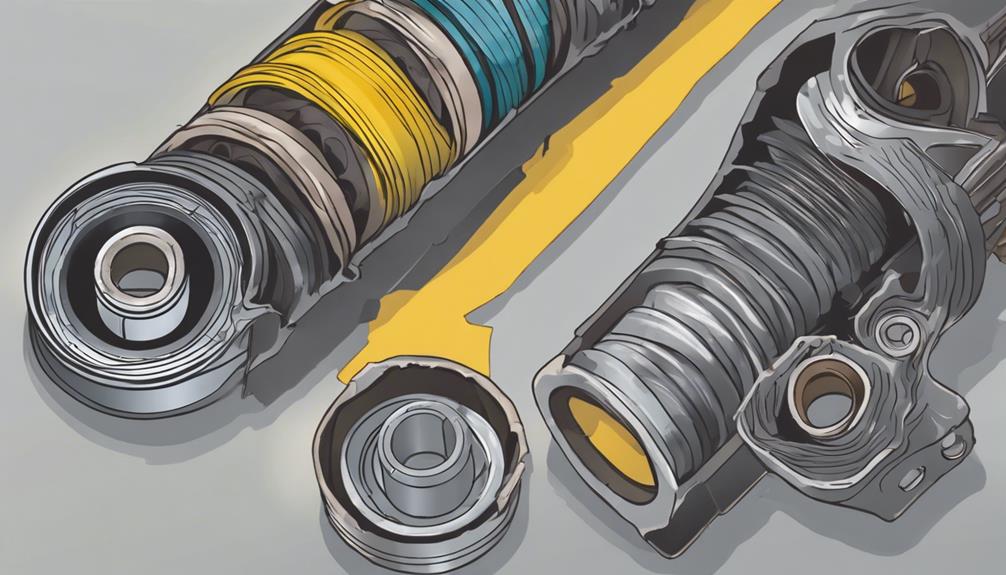
Inadequate lubrication or contamination can lead to premature failure of pulley bearings in serpentine belt systems. Defective pulley bearings are often caused by issues in pulley design or improper maintenance practices. When the bearings within a pulley fail, it can result in increased friction, heat, and wear on the serpentine belt, ultimately leading to system failure.
To understand the impact of defective pulley bearings, let's look at a comparison between properly functioning bearings and defective ones:
| Aspect | Properly Functioning Bearings | Defective Bearings |
|---|---|---|
| Lubrication | Adequately lubricated | Lack of lubrication |
| Performance | Smooth operation | Increased friction |
| Durability | Long lifespan | Premature failure |
Ensuring that pulley bearings are designed correctly and that proper maintenance practices are followed is vital in preventing premature failures in serpentine belt systems. Regular inspections, timely replacements, and using high-quality components can greatly extend the life of pulley bearings, ultimately improving the overall reliability of the system.
Frequently Asked Questions
Can Using a Lower Quality Pulley Affect the Performance and Longevity of a Serpentine Belt System?
Using a lower quality pulley can greatly impact the performance and longevity of your serpentine belt system. Correct installation procedures are essential. The material of the pulley affects how it interacts with the belt, influencing overall system efficiency.
Are There Any Warning Signs That Indicate a Pulley Is About to Fail, Aside From the Issues Mentioned in the Article?
When a pulley is on the brink of failing in a serpentine belt system, warning signs may manifest as abnormal pulley vibrations and strange noises. These cues signal impending issues and should prompt timely assessment.
How Often Should Pulleys in a Serpentine Belt System Be Inspected and Replaced to Prevent Failure?
Inspect pulleys in serpentine belt systems every 60,000 miles and replace them preventively every 100,000 miles. Common causes of failure include wear and misalignment. Preventive measures include regular maintenance and ensuring proper tension and alignment of the belt.
Are There Any Specific Maintenance Tips or Practices That Can Help Extend the Life of Pulleys in a Serpentine Belt System?
To extend pulley life in a serpentine belt system, regularly lubricate and confirm proper tensioning. This maintenance routine can decrease failure rates greatly. By following these steps, you'll enhance the reliability of your vehicle and save on costly repairs.
What Are the Potential Consequences of Ignoring or Delaying Repairs for a Failing Pulley in a Serpentine Belt System?
Neglecting or postponing repairs for a failing pulley in a serpentine belt system can lead to catastrophic engine damage. The urgency of repair cannot be overstated. Proactively addressing issues guarantees peak performance and prevents costly consequences.
Conclusion
To sum up, pulleys in serpentine belt systems can fail due to a variety of reasons such as excessive wear and tear, lack of lubrication, misalignment issues, overheating, and defective pulley bearings.
It's important to regularly inspect and maintain these components to prevent costly repairs and breakdowns.
Remember, a well-maintained pulley system is like a well-oiled machine – it will keep your vehicle running smoothly with unparalleled efficiency.

